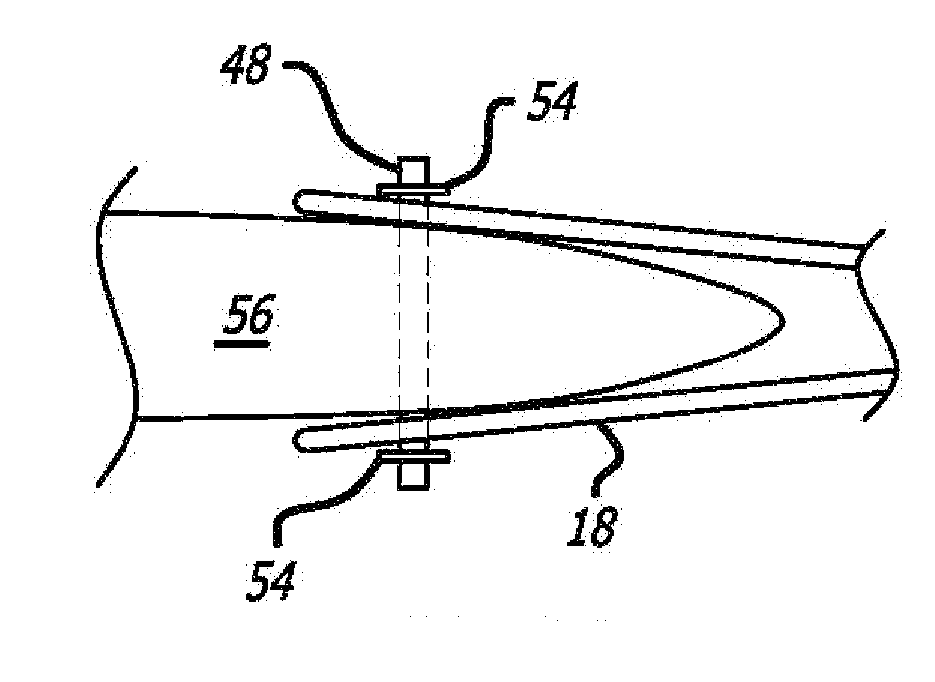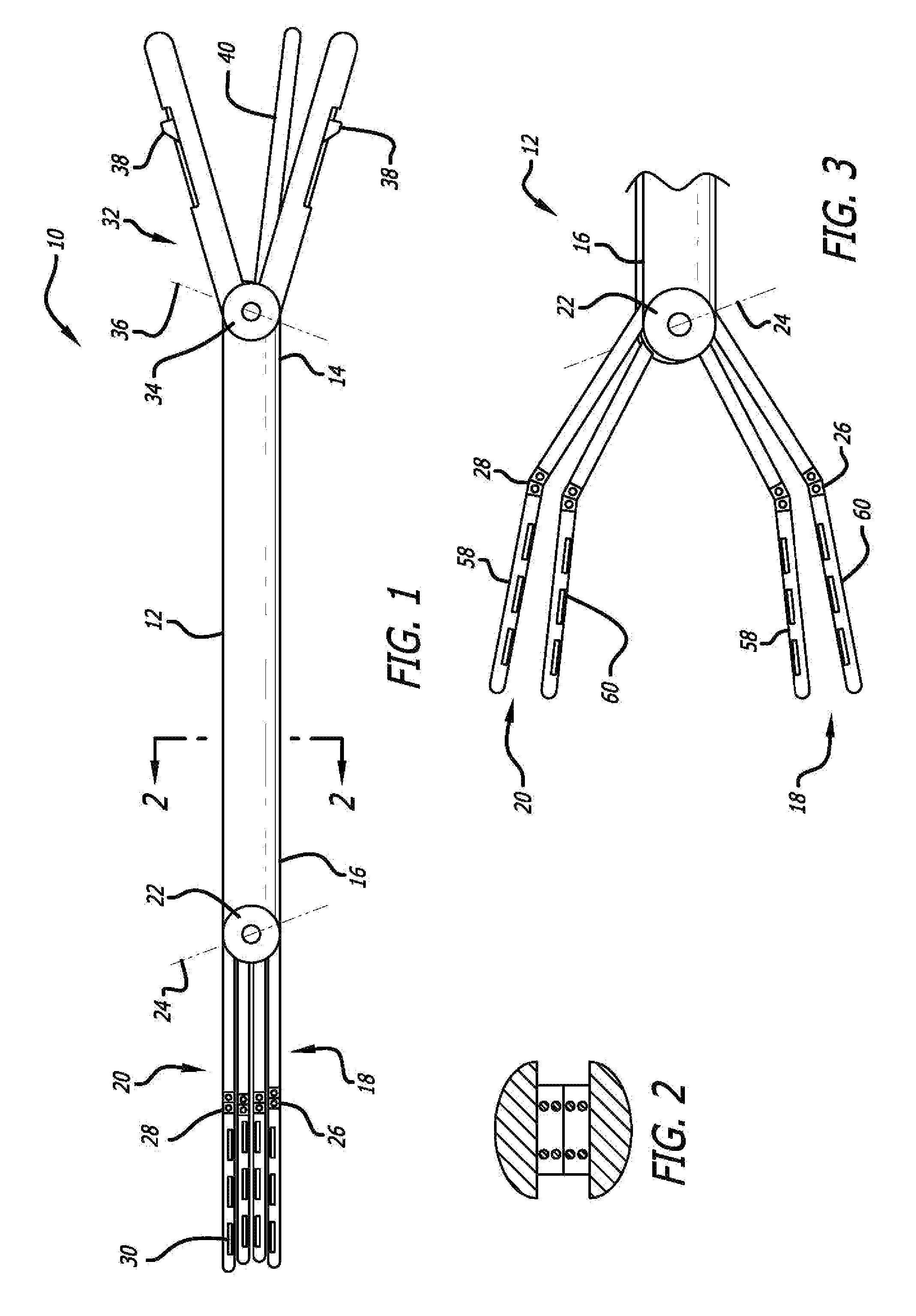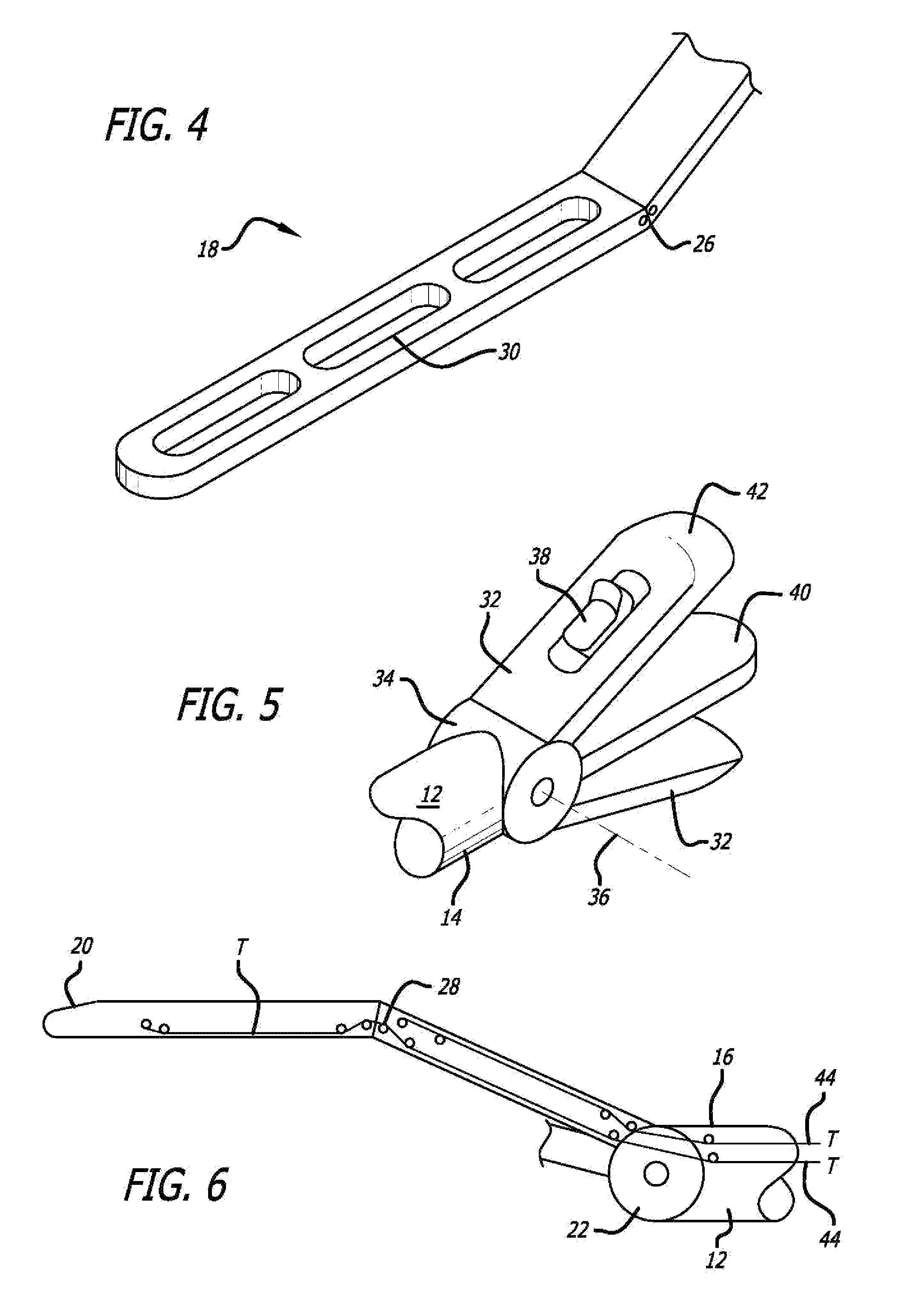Laparoscopic surgical clamp and suturing methods
a laparoscopic and surgical technology, applied in the field of medical devices, can solve the problems of reducing the size of the surgical site, affecting the surgical operation, and limiting the ability of laparoscopic liver resection to be performed
- Summary
- Abstract
- Description
- Claims
- Application Information
AI Technical Summary
Benefits of technology
Problems solved by technology
Method used
Image
Examples
Embodiment Construction
[0037] The laparoscopic surgical clamp 10 used in accordance with the methods of the present invention is generally illustrated in FIG. 1. The laparoscopic surgical clamp 10 is particularly configured to be applied to a patient's internal organs, including, but not limited to, the liver, lung, spleen and kidney, during minimally invasive surgical procedures. The laparoscopic surgical clamp 10 includes an elongated shaft 12 having a proximal end 14 and a distal end 16. First set and second set of double jaws 18, 20 are connected to the distal end 16 of the elongated shaft 12 by a pivot 22 and are pivotally moveable relative to one another about a rotational axis 24.
[0038] The laparoscopic surgical clamp has the capability of being manipulated into various positions as desired by the surgeon during the minimally invasive surgical procedure. In an opened position, the first set and second set of double jaws 18, 20 are separated and substantially parallel to one another. In a closed po...
PUM
 Login to View More
Login to View More Abstract
Description
Claims
Application Information
 Login to View More
Login to View More - R&D
- Intellectual Property
- Life Sciences
- Materials
- Tech Scout
- Unparalleled Data Quality
- Higher Quality Content
- 60% Fewer Hallucinations
Browse by: Latest US Patents, China's latest patents, Technical Efficacy Thesaurus, Application Domain, Technology Topic, Popular Technical Reports.
© 2025 PatSnap. All rights reserved.Legal|Privacy policy|Modern Slavery Act Transparency Statement|Sitemap|About US| Contact US: help@patsnap.com



